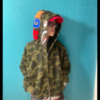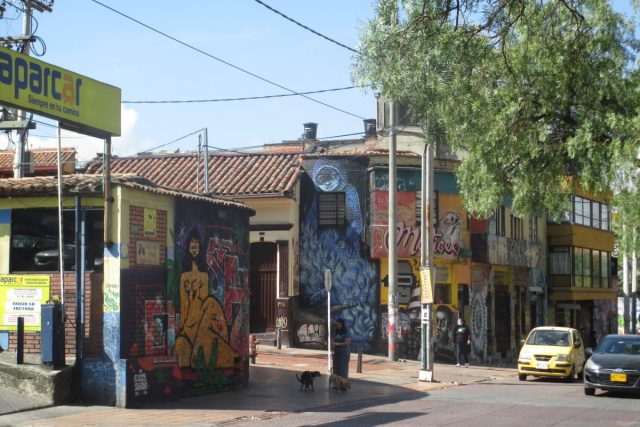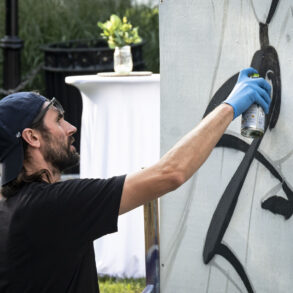On arriving in Bogotá, Colombia, and driving on Avenida El Dorado from the airport into the city centre, you wouldn’t be the first to wonder if you were in fact in an open-air art gallery. The explosion of colour against the often-grey skies makes it difficult to avert your eyes from every piece of art, each as intricate and detailed as the next.
In 2013, the Mayor of Bogotá, Gustavo Petro (now the President of Colombia), altered the laws surrounding street art into an extremely liberal policy, and the practice boomed. There is nary a wall in Bogotá without a graffiti tag or a sharp-cutting slogan. Nowadays, street art is a defining feature of Bogotá. In fact, one of the most popular tourist attractions the city offers is a graffiti tour that takes you around the most famous murals and installations.
This artistic expression occurs despite Colombia’s history of violence; a grizzly 52-year conflict between left-wing guerilla groups and right-wing paramilitary organisations left a country processing a tremendous weight of pain and tragedy. The complicity of the state as well as forcible disappearance of 100,000 people leaves many Colombians unable to get justice or closure. As the capital city, Bogotá has faced horrific events, and now faces a hefty job of leading the recovery effort, helping the country to move forward. For this, the chosen direction of policy is in the country’s memory – remembering the conflict through the eyes of its victims, and forming a collective memory that Colombia can collectively process. It is an idea rich in expressive potential.
Street art allows the citizens of Bogotá to reconfigure the past, and to write their own memories
Street art allows the citizens of Bogotá to reconfigure the past, and to write their own memories. Memory is a battleground – it is contentious, valuable, subjective. Those who control the memories control the narrative. Art allows the people to construct their own sense of memory around their own subjective experiences, and allows these experiences to surround future generations on every surface, through a reconstructed sense of memory present everywhere; in every space, on every street, Bogotá expresses its memory through colour and symbolism. These memories are transmitted through generations from the perspective of those who lived them, processed as they’re expressed, and given new life as they’re seen and explored everyday by passers-by. The narratives shared in this art are public domain. They are public and personal, intimate and common, in the same way that any collective memory of the conflict is deeply subjective and also profoundly universal.
While street art helps to reconstruct memories, there is a rebellion in street art that allows citizens to subvert the power of the state and to defy the authorities that couldn’t protect them. Street art’s canvas is public space – it is a reclamation of that which the state owns. It takes back territory from those who took so much from them, and the chosen territory becomes collectively owned, democratised. Stinkfish, one of Bogotá’s most well-known street artists, said about street art in 2010:
“It’s an irrefutable message, political like no other: here I am and I exist above this system that undoes and kills him who is not part of its logics, here I am painting these streets when I want and how I want to, no matter how many watchmen, how many police officers, and how much CCTV there are; if tomorrow I’m gone, thousands more will be there.”
Street art, therefore, is a political movement. It’s a middle finger to the state and every perpetrator of Colombia’s collective trauma. No matter how legal street art becomes, it will always drive the rebellion and protect the people first. Whether a mural or a simple tag, it represents artists reclaiming a piece of Colombia, however small, for the people.
Street art, therefore, is a political movement
When the street is the canvas, the art is the experience of those who walk the streets. It remembers and it creates its own memories. It rebuilds that which war has destroyed. Street art builds beauty from the ugliness of the past to build the conversations of the future.
Photography credit: Rachel Appleton

This post was originally published on this site be sure to check out more of their content.







